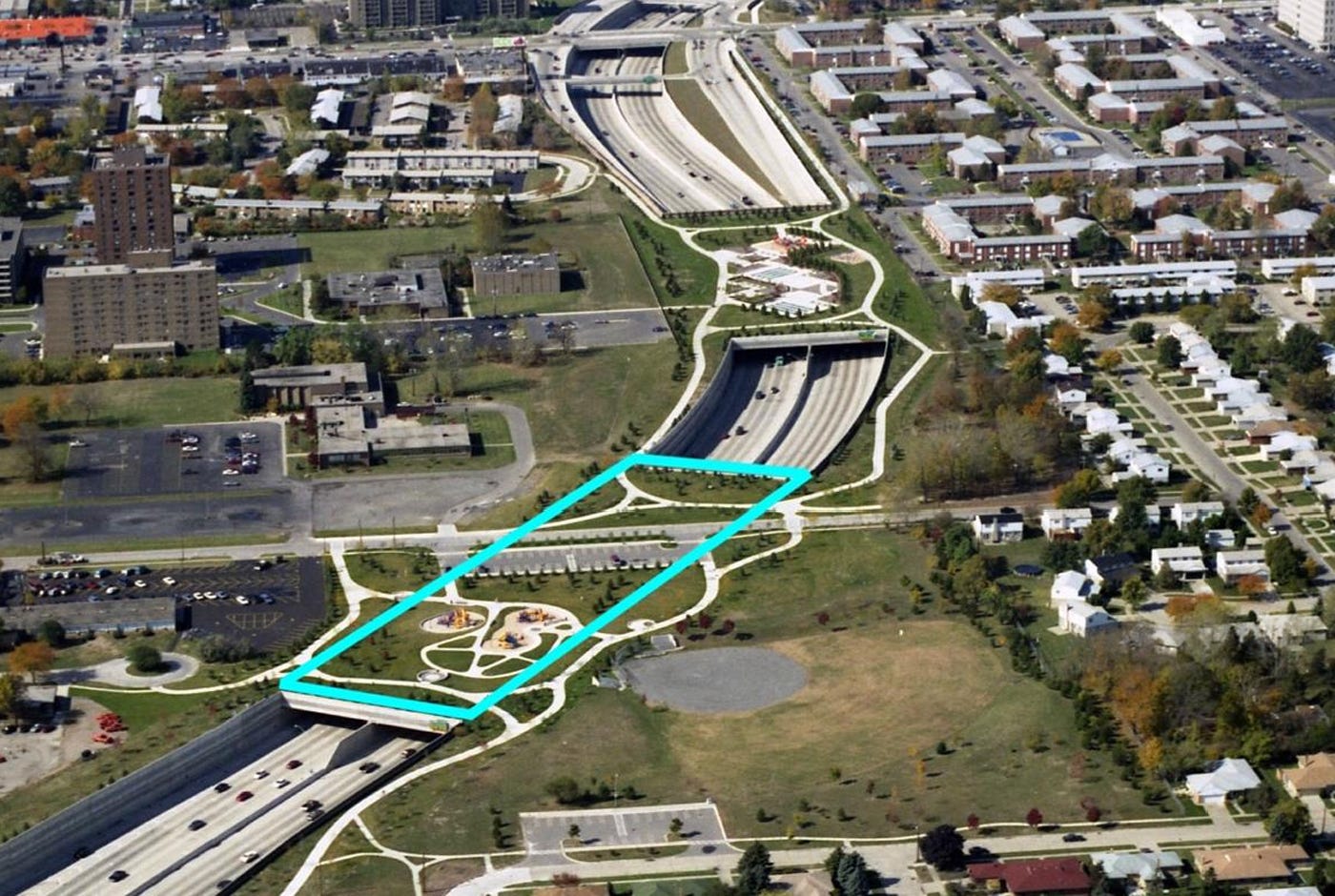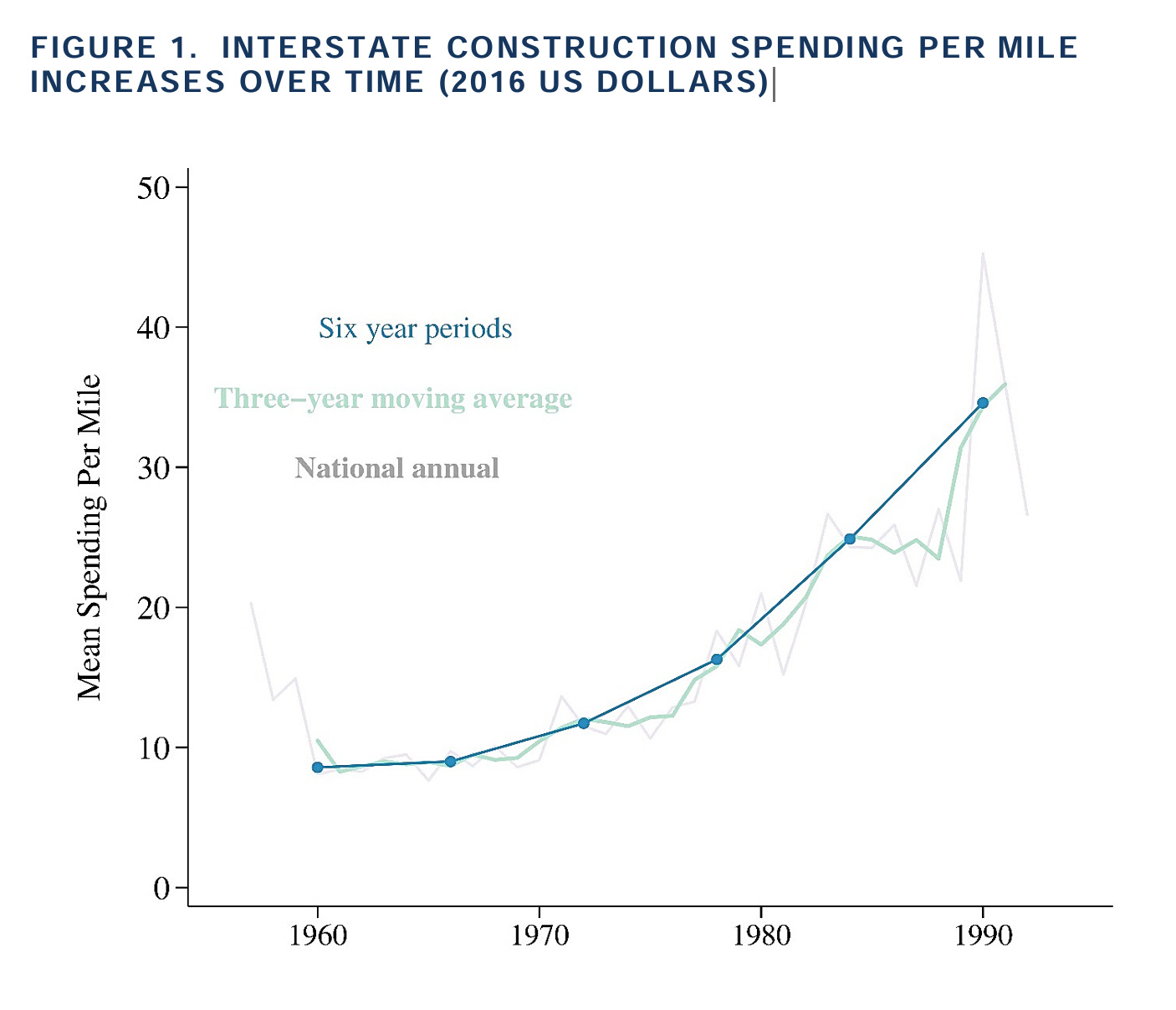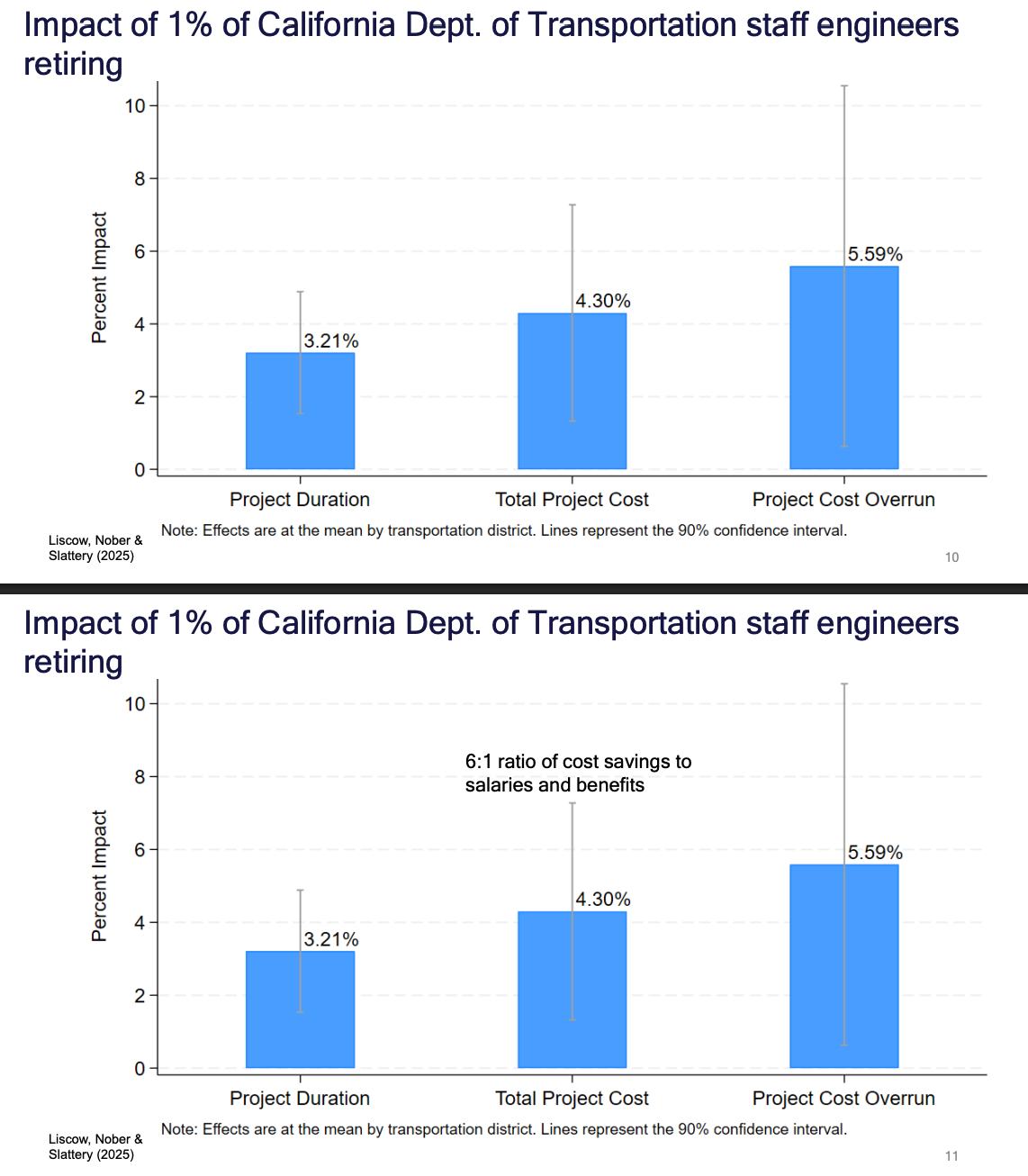This episode was originally recorded on September 4th at the Abundance Conference in DC.
Zach Liscow, my guest today, is a professor of law at Yale Law School. In 2022-2023, he was the Chief Economist at the Office of Management and Budget. He's also now my colleague at IFP, as a non-resident senior fellow.
I have a bit of a problem today, which is that while Zach may not be a national household name, he might as well be in this audience. As most of you are aware, Zach has worked on many interesting economic topics, but especially on infrastructure costs: why it costs so much to build in the US, what the inputs are, and cross-cutting comparisons.
The challenge for me today as an interviewer is that, in part because of Zach’s work, everyone here now knows that infrastructure in the US costs a huge amount to build. I recently reviewed some submissions for a project on transit at IFP, and every other submission referenced the fact that the cost per mile to build a subway in New York is something like eight times more than the equivalent project in Paris.
These stylized facts are now embedded in our discourse. And my problem is that this makes it a little hard to figure out how to have a conversation that isn't just all of us nodding in agreement. I'm going to try to tackle that problem, but I just want to lay my cards on the table. This is my fear, and we’ll try to avoid it.
So let me start here: We all know infrastructure costs too much in the US. There are many plausible stories about why that is. One that people would most associate with the abundance narrative is that we've built up a ton of regulation, and that regulation creates soft costs. [My colleague Brian Potter has investigated the soft costs of building a single-family home.] Complying with the regulations creates a cost, and it increases the time it takes to build infrastructure, and the longer you work on a project, the more all kinds of costs accrue.
What are some other possible explanations?
I divide the things that drive up transportation infrastructure costs into four buckets:
Permitting and litigiousness.
Procedural rules, especially on procurement, often reduce competition, because it's hard to get competitors to go through the complex process.
Personnel: the state and federal Departments of Transportation (DOTs) are maybe understaffed, especially for more highly-skilled positions.
Fourth, we have weak data. It's hard to know what's going on out there in the world, and it's hard to fix the problem if you don't know the facts on the ground.
I'm not going to be able to offer exact percentages to those, and it's going to vary depending on the exact project. But those are the four issues.
Give it to us one more time so that this sticks in our heads.
The three P's — permitting, procedure, and personnel — and data.
Let's start with permitting, which is the one I’ve personally spent the most time thinking about. There are many pieces of the permitting puzzle, but the National Environmental Policy Act (NEPA) gets the most attention. Are policy advocates — are people like me — spending too much time on permitting, and on NEPA specifically, relative to the other blockers?
Yes. But I'm part of the problem. I've written a lot on NEPA: it's problematic: it should be reformed. It takes four years to do the average environmental impact statement. Then there's often litigation. Even if the project opponents lose on everything, it takes a year and a half for the median lawsuit. If they win on one thing, it takes two and a half years, and then you can appeal. [NB: My colleagues at IFP have termed this cycle “the litigation doom loop.”] It takes time and money to write the report. But the issue is more the things that you do, either defensively or reactively, to the project itself. They make it much more expensive.
In my paper "Infrastructure Costs," with Leah Brooks, we talk about this section of interstate outside of Detroit. There were some earlier sections that were built cheaply and quickly in the '60s. Then various things happened for the last segment. There was a lawsuit: it was challenged under NEPA and it costs several times as much. They built sound walls, it was built below ground, there were parks built on top of the highway next to fields. It's not an area where lots of open space was needed, but these things were all done to get the lawsuits to stop so that the thing could be built and connect the other two pieces of the highway.

This all sounds very compelling; it’s a version of a story about permitting that I've told my parents. Given that backdrop, why should we think NEPA's not the core problem? Is it under-discussed out in the world, but over-discussed by us?
NEPA gets — at least for transportation infrastructure — more time than it deserves, relative to the other three buckets. There are two pieces to it. One is, there are lots of issues of permitting, especially at the state and local level, that are not NEPA: all sorts of water permitting rules and local mini-NEPAs. These things all matter as well.
Then there's this whole other half: permitting is going to vary depending upon the kinds of project you're talking about. Building a highway — a linear project, above-ground, where you're going to have to knock stuff down — that's going to have significant environmental impacts. Some people are going to be upset, there's a good chance of a lawsuit. Permitting's important there. Other things — a tunnel underground in New York — the litigation about environmental impacts, that's not the main thing. Yet the miles in New York City are the most expensive ever built in the world, for no reason having to do with geography. For that, you want to look at procedures, personnel, and, at a high level, the data that we lack to understand what's going on.
Let's talk about personnel, which is a piece of the puzzle you've been spending time on recently. You have a paper just out about this.
I have a paper with Cailin Slattery and Will Nober studying transportation construction in California. We assemble data on the individual engineers involved in transportation projects. What we found shifted my views about the basic issues that drive up costs. First, we found that when an extra 1% of state engineers retire, costs go up by 4.5%, which is a big effect. If you increase the quality of engineers working for the state from the 25th to the 75th percentile, that results in huge cost savings. The savings are three times the amount it costs to hire one of these engineers. So you should be willing to pay a gigantic amount to increase quality or reduce retirements, because it would pay for itself.
By, “reduce their retirements,” you mean keep these people on for a few more years?
There’s a phenomenon called wage compression in the public sector — state governments don't pay that much for highly-skilled workers. [In a recent episode of Statecraft, Judge Glock explained public-sector wage compression in more detail.] So a lot of these people work in state government for a handful of years, then go work in the private sector and have a much higher salary. If you could retain them, you could benefit from their expertise.
In that paper, you talk about falling levels of talent at state departments of transportation (DOTs). For the last 20 years, the total number of employees at most state DOTs, and the size of the DOT relative to the rest of the state government, have dropped. Why is that?
It's a huge issue. State DOTs are doing more, yet they have fewer people. There are a few theories. One is, we had a financial crisis that imposed huge pressure on the states. What you often see — this is definitely the case in Connecticut — is that the thing you cut is not Medicaid, it’s not services. You cut the workers who implement things across government. The impacts of these things are often diffuse and long-term, whereas a cut to some benefits program, or paving fewer highways, would be salient and opposed. States have balanced budget requirements, so they’re under more fiscal stress than the federal government, and this appears to be the way that they have dealt with it. My paper suggests that's counterproductive and self-defeating.
Do they end up paying more for those short-term cuts? Part of the stylized story that I've heard is that you cut head count in a downturn, to reduce costs, and then later you pay contractors — maybe those same people in the private sector — a premium to come back and do the same work.
If you look at civil engineers — the people who build transportation — over the last quarter-century, the number in government has been flat. There's been this explosion outside government. What that says to me is, we're outsourcing more and more. We need to outsource — the people who build transportation infrastructure [shovels in ground] are 100% private contractors. But you need to have the capacity inside government to manage this very complex process: to choose what to build, permit it, put the thing out to bid, and then manage this complex thing.
If you don't have enough people inside government, you're not going to have enough contractors who bid on the thing. You're not going to manage them well. You're going to change your mind, which is very expensive. You're going to let them take you for a ride. So there are lots of reasons to think that, if you have too few people in government, you're going to outsource too much, which ends up being very expensive.
Why is it the case that if you don't have good folks in your department of transportation, you get fewer contractor bids? Is it because you're writing bad contracts, and nobody wants to take you up on them?
Quality engineers matter most in places with less competition, which suggests that one of the ways state engineers matter is that they bring in more bidders. They have simpler procedures that are easier for bidders to understand. One possible mechanism is, they bring in more competition. The level of competition in these bids is astonishingly low: the typical bid has three bidders, and yet states do almost no outreach to try to increase that number. If you have the same bidders coming over and over again, and there aren't many of them, reduced competition can drive up prices. Sophisticated bureaucrats are going to increase competition to reduce costs.
You're talking to a policymaker who's not a transit wonk, but you want to explain to them which kinds of capacity you want to build in your state department of transportation. What's your quick explanation?
The choke point is these highly-skilled engineers. That's where the pay compression hits. They're highly educated. If they're talented, they command high salaries. We need to retain those that we have, and we need higher-quality ones. This amounts to creating more slots, and paying the ones that we have more to increase the talents of those who are working for the government.
If I'm the head of my state DOT, I can imagine understanding this problem: we pay the same people three times more in the private sector to do this work. I would be able to keep down costs and be rewarded politically if I bring these people in-house. Is there pressure from politicians or civil servants to bring this stuff in-house to improve their state capacity? If not, why?
It's a very interesting set of questions that folks should look into more. I'm going to give you one hypothesis. If you think about the incentives of the engineers who work in government, many of them are going to leave and go make more money in the private sector. Maybe they don't want to rock the boat with the private contractors, who they want to be their future employers. I haven’t worked for a state DOT, but from the outside, as an economist, looking at the raw incentive structure, there's reason for concern.
Why is this a consistent pattern across states, including liberal states? You could tell this political story, where red states are happier to cut headcount at their DOTs when they’re in fiscal trouble. But It seems to have happened broadly, across the US.
It's a great question: “Shouldn't blue states be pro-state employees?” One hypothesis is that it's the blue states that are under more fiscal pressure. They often spend more on Medicaid.
But don't they tax more?
Look at Connecticut, a blue state where I live. We have one of the highest debt loads in the country. We have three times the debt per person that Texas does, so we're under much more fiscal stress. Texas also is growing, and can grow out of the debt — blue states typically are not growing. So on average, the fiscal stress hits blue states substantially more than red.
I talked a few months ago to Randy Clark, the head of the DC Metro system. In an earlier conversation with Axios, he’d talked about “the consultant-industrial complex.” When I asked him about it, he corrected himself to say “the ‘transit-industrial complex.’” He pulled back from saying the consultants are the problem. He had a point, which is that DOTs need these consultants because they don't have the capacity in-house. Even when they do, sometimes they need consultants for specific things.
You said that you don’t want to bring everything in-house. So in your ideal, Liscow-directed DOT, you're adding a bunch more engineers. What's the role of the consultants?
I totally agree that you need consultants, not just for building the things, but also for planning them. Take the Second Avenue Subway, a big tunneled project. It does not make sense for New York City to hire people who are tunneling experts for 30 years, because they're only actually tunneling a small share of the time. You need to hire large international firms who are experts in this to do it. So you need enough to manage the project well, and that's going to depend upon the context.
I've shifted my views about the importance of personnel in part from my own work, but also in part from the excellent work of the Transit Costs Project. They talk about the Green Line [in Boston] and California High-Speed Rail. These are billion-dollar projects. At one point, for the Green Line, they had five people managing this several-billion-dollar project. You need enough people to at least manage the contractors and they did not have that.
That's interesting, because California is not a state that I think of as having insufficient access to good civil servants.
The structure for California High-Speed Rail was to create a whole new organization, and it takes time to staff it up. They were managing huge amounts of money with 10 or 12 people. They started things and realized, “That doesn't work.” When you’re talking about concrete in the ground, it's expensive to start something and then stop and undo it. So there are questions about the right institutional structure, but their own audit suggested it did not work out well. California high-speed rail has lots of issues, but this is one of them.
Let me ask you about other big blockers. We've talked about personnel and permitting. I'm trying to remember my P's. Some people would say, “We don't talk enough about the unions.” But you could also talk about Anglo common law practices, and that's why it always costs more in English-speaking countries than in France or Morocco. You could talk about citizen voice, that maybe too many citizens get a say. There's a bunch of other things that you could point to. How should we rank the problems?
As an academic, part of what makes infrastructure costs so interesting to me is that there's not one answer. There are several things going on simultaneously, and sometimes they're related. You gave a great list. Something that does not get enough attention — maybe because it's the most boring word in the English dictionary — is procurement. The ratio of discussion of permitting to procurement is not where it should be, and I'm part of the problem.
Surely that can't be because of boringness, because permitting is also not the most interesting topic to lay people. We'll have to dig into this — why does procurement get the short end of the stick?
It does involve arcane rules. Let me give you one example. For a large number of infrastructure projects in the US, DOTs have to take the lowest-cost bidder. You put out a bid, there are a variety of bidders, and it makes sense to take the cheapest one. Except maybe the firm that had the lowest bid has a history of going way over-budget, or overtime, or having low quality, or having a proposal that's worse in some way. But often, you have to take the lowest-cost bid. In European countries that spend much less on transit, they give 25% weight to the bid and 75% weight to these other quality-related things that we often give little weight to. Some states have reformed, but many have not, and it's an arcane thing that is not working well.
Let me give you another example. Part of our paper focuses on repaving. It's the simplest thing that is done in transportation. I would've thought that when a state DOT puts out a description of the project with the rules and regulations that need to be followed, it would be a dozen pages. It's, “You repave, here's where you need to repave, and here are a few rules.” But these things are often hundreds of pages. States that have longer and more complex documents end up costing substantially more. This suggests that these states that have more complex procurement rules end up having more expensive projects, in part by driving out competition, in part by having more compliance that you need to figure out.
Unions — I'm a liberal, I support unions. Unions are sometimes problematic. In Connecticut, if you want to hire someone and you put up a job posting, you need to hire someone internally if that person meets the minimum job qualifications — even if there's someone outside government who is way better. This is part of a union contract. It does not get much attention in this state, but that's not great practice for having a high-quality workforce.
Is that ever a feature of contracts in the private sector? There was a General Services Administration (GSA) report recently on exactly this, where the Inspector General (IG) slammed the GSA for trying to hire people better than the people internally who met that bar — for trying to look for better talent. The IG came down hard and said, “You should not be trying to find the best people for the job.”
Sometimes you want government to operate differently from the private sector, but I have never heard of this in the private sector, and it strikes me as a good practice for neither the private sector nor the public sector.
Are there places where bureaucratic bloat is the problem? We've talked about under-capacity — are there places where the problem is too many cooks in the kitchen at the state DOT? How can we distinguish between places where there are too many people in this process and not enough?
Two answers. One, if bureaucratic bloat means too many rules, for sure: too many state rules, federal rules, interaction between the rules. Second, there is sometimes bureaucratic bloat in terms of too many cooks. This takes a couple of forms. One is when you have two different state agencies involved. You have the state DOT and the state environment department, and they don't agree, because you're going to fill in a ditch to repair a highway. That can be problematic. I want to protect the environment, but we also need to build things sometimes.
There's also bureaucratic bloat in the sense that you have the state and the federal layer. To give one example of this, there is a bridge we're rebuilding in Connecticut. It's going to cost about a billion dollars, and then also costs to operate, because it is a movable bridge: it goes up and down. Remarkably, this is a movable bridge because the US Coast Guard has apparently insisted that this two-mile waterway needs to remain navigable. You need to have a movable bridge: more expensive to build, and you have to have someone operating it. Trains have to slow down because the rail is no longer continuous. It's going to break more because it's movable. Political scientists call this marble-cake federalism, where it's not clear who has responsibility and you have multiple layers of bureaucracy and rules. In this case, it is not working out well.
You were in the Biden White House, at the Office of Management and Budget, the nerve center of the executive branch. Were any of these themes that we've talked about hard to convince colleagues of?
There were lots of very talented people, lots of people I admire, from the Biden White House. [Pauses.] Obviously, we were not successful at cutting costs, and I wish that had been different.
I'll leave it at that.
Let me ask you to give us all some directives. You and I are both now at IFP, and IFP tries to pick tractable problems to work on. We want to spend our time on things that have a chance of happening. If the goal of people in this room is to get transit costs down, what's tractable? Are there easy wins available?
I think there are. For personnel — especially in blue states, which tend to have the transit mega-projects — we're talking about spending more money on state employees, who are powerful constituencies. If you believe my highway results, they will often pay for themselves, so it's a win-win.
In terms of procedures like procurement, these are arcane things. Sometimes, the contractors may not like bringing in more competition, or driving down costs. But you can reduce the rules they have to go through. Changing procurement rules will not generate protests in the street.
Something we have not talked about tons: better data. It would take a tiny amount of funding to have much better data — to learn huge amounts about the hundreds of billions of dollars a year that we spend on this stuff. It's teeny tiny with upsides that are many times the cost.
To the people trying to better understand these problems, what data could they be digging up that doesn't exist cleanly right now? What are the unanswered questions that we could use more work on?
The basic data:
What does every project cost?
What were the components of the cost?
What was the timeline for those projects?
Those are not, to my surprise, easily out there. It took me much longer to write the project than I expected. Those should be out there. It's public money: the public should have the data.
All sorts of things have not been super well-studied. There are many ways you can procure: there's no awesome paper on lowest-cost bidding. There are lots of case studies, there's intuition that this makes no sense, but studies where you can compare places that have one process versus another would be super-useful.
It would be wonderful to have much more on personnel. I've written papers on permitting. There's lots of good descriptive data out there. But in terms of the exact effects — which permitting regimes cause what — this paper does not exist — Heidi Williams and I are trying to write it. Maybe it will exist at some point, but others should get to it before we do. So this whole area is hugely important, way understudied. There's a huge amount of potential.














